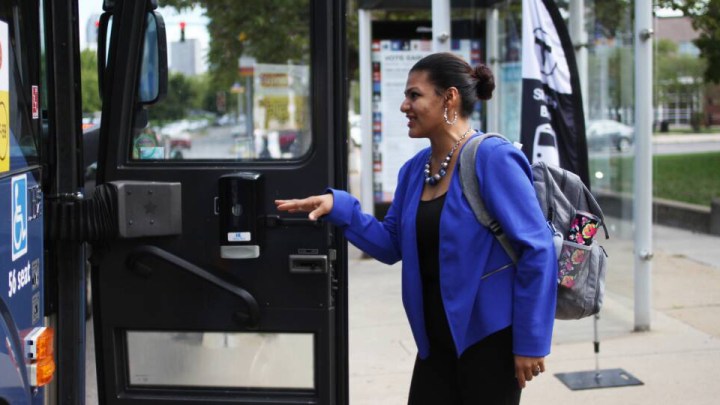
Community college students without cars can face transportation challenges
Community college students without cars can face transportation challenges

To arrive at Roxbury Community College in Boston, part-time student Kiara Rosario depends on the city’s Orange Line. It was shut down for repairs for 30 days this summer.
“I do not have a car. I do need this transportation,” she said, waiting at a temporary shuttle bus stop outside the college.
The 34-year-old single mother, who is studying to be a social worker, said she typically spends about $90 a month on public transportation. “It’s more than $1,000″ each year,” Rosario said, “but less than car insurance.”
For the past few years, because of COVID, college students like Rosario didn’t have to worry much about getting to class since many courses went online. But the return to classrooms is raising old questions about accessibility. For some, simply getting to campus is difficult.
A lack of dependable transportation can prevent working students like Rosario from earning degrees on time — or at all.
“Students today have complicated lives — managing child care, work, other family commitments,” said Abigail Seldin, CEO of the Seldin/Haring-Smith Foundation, which maps the proximity of public transit stops to community colleges across the country.
Her research found that in New England, 20% of community college campuses are not easily accessible by public transportation.
“Routes and schedules, as well as the cost of public transportation, impact whether a school is really accessible,” Seldin said.
On average, students spend about $2,000 a year on transportation, according to the College Board.
“For context, a full Pell Grant is $6,000 a year, and most of that is absorbed by tuition at many schools, even many community and technical colleges,” Seldin said.
Her foundation is using its findings to encourage federal subsidies that will help students cover their out-of-pocket transportation costs as well as encourage schools without public transportation to establish links to bus routes.
To pay for tuition and rent, Roxbury Community College student Kiara Rosario said she also works part time at a grocery store. So reliable, affordable transportation is critical for her.
“The more time I spend traveling, the less time I have to study, work and be with family.”
Rosario said the Orange Line’s temporary shuttles were running about 15 minutes behind schedule this summer and were often full. “We only use one door in the shuttle and everybody has to be seated,” she said.
And those delays cut into her study time.
There’s a lot happening in the world. Through it all, Marketplace is here for you.
You rely on Marketplace to break down the world’s events and tell you how it affects you in a fact-based, approachable way. We rely on your financial support to keep making that possible.
Your donation today powers the independent journalism that you rely on. For just $5/month, you can help sustain Marketplace so we can keep reporting on the things that matter to you.
















